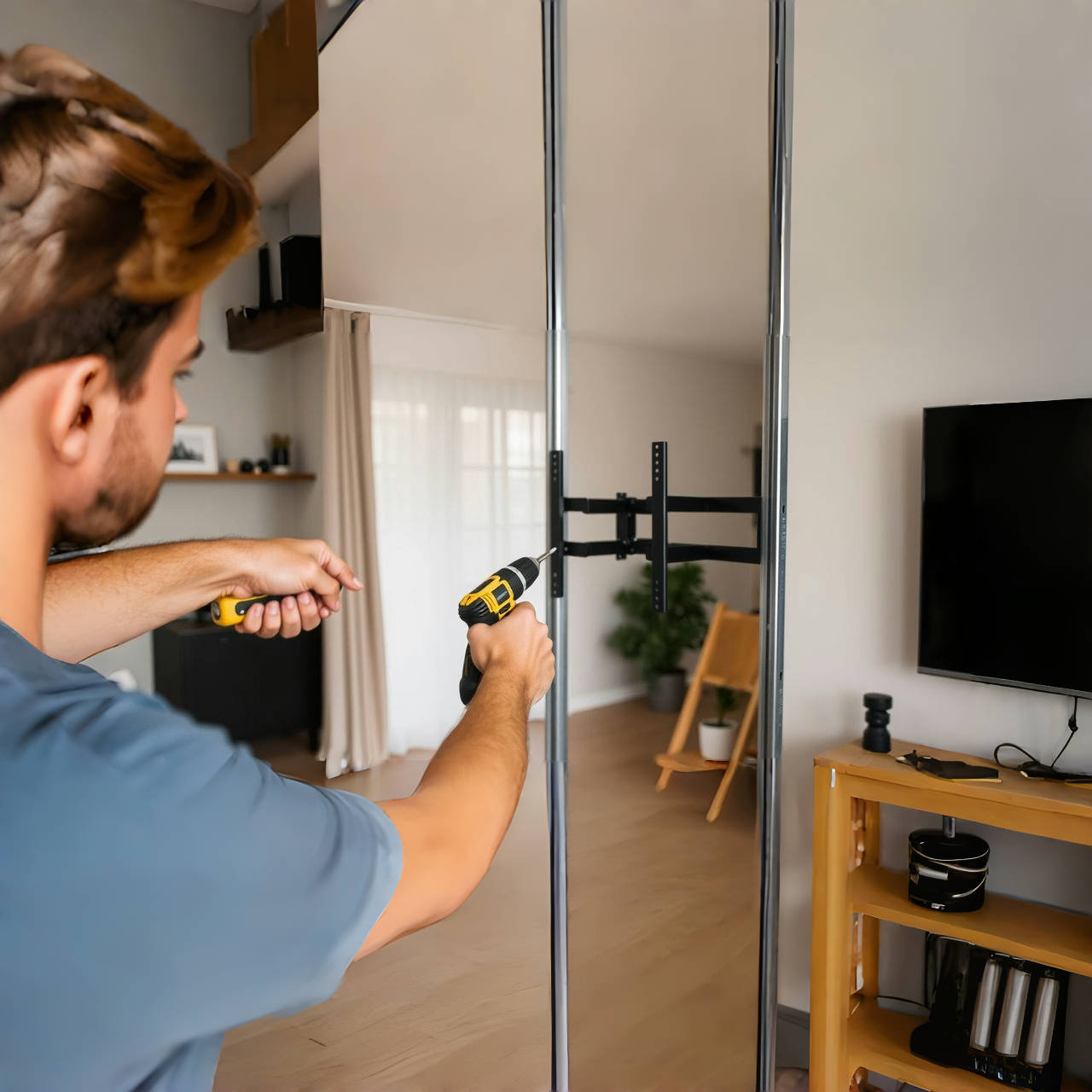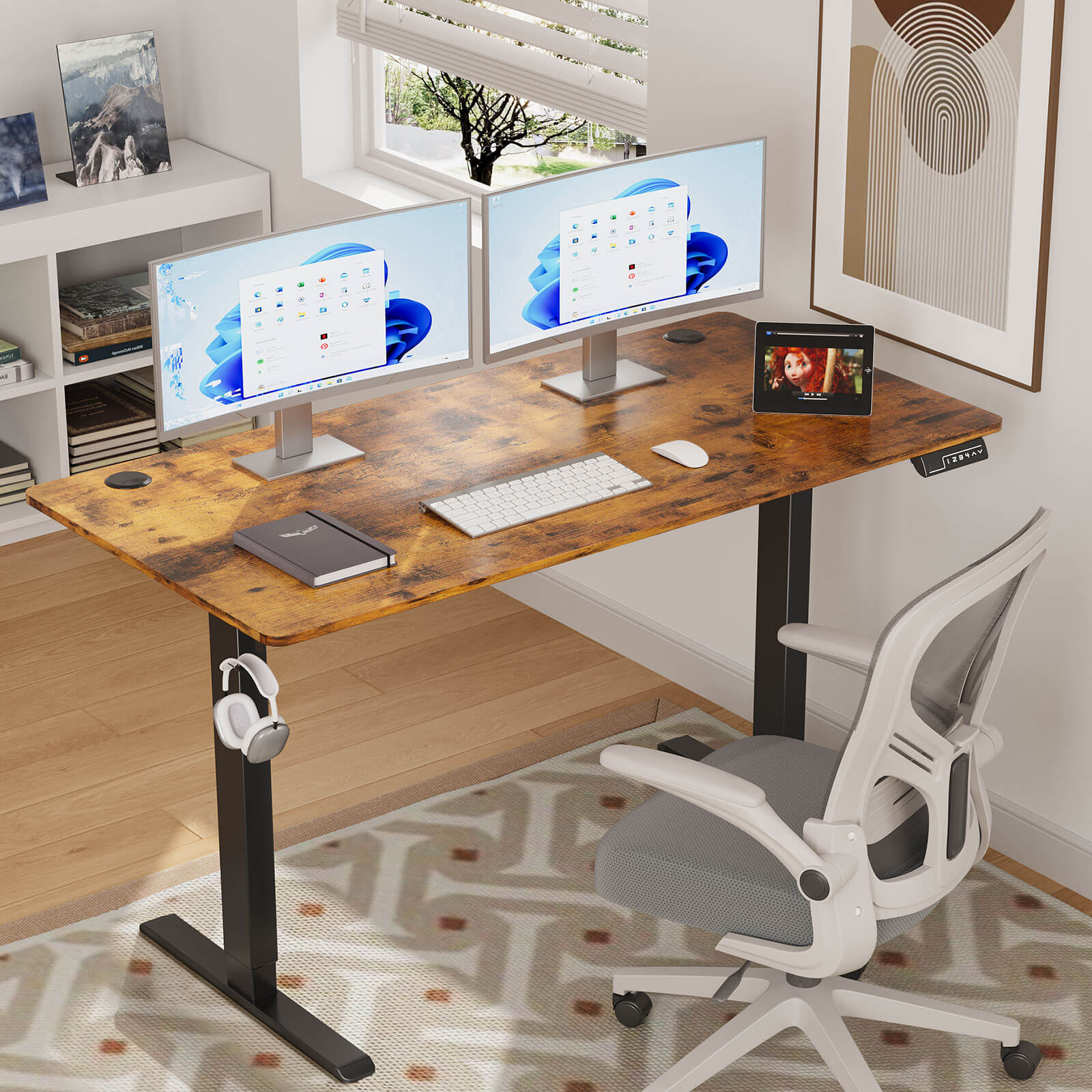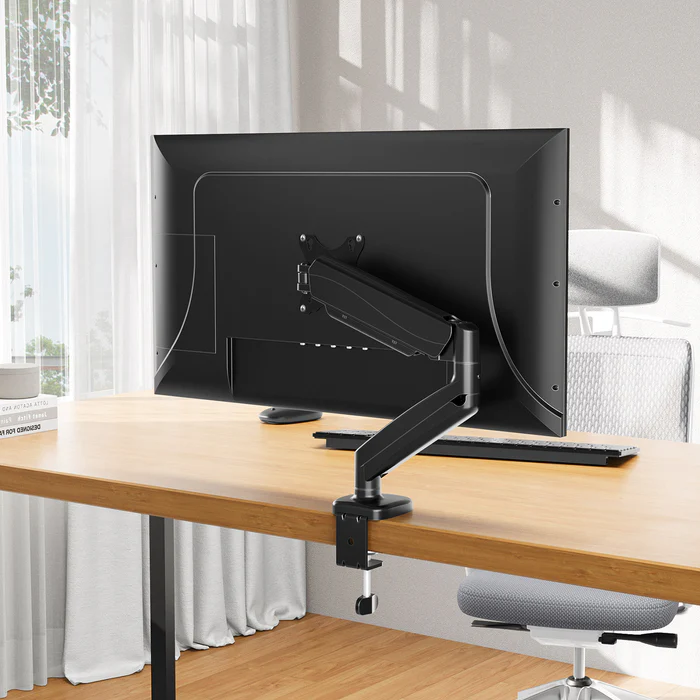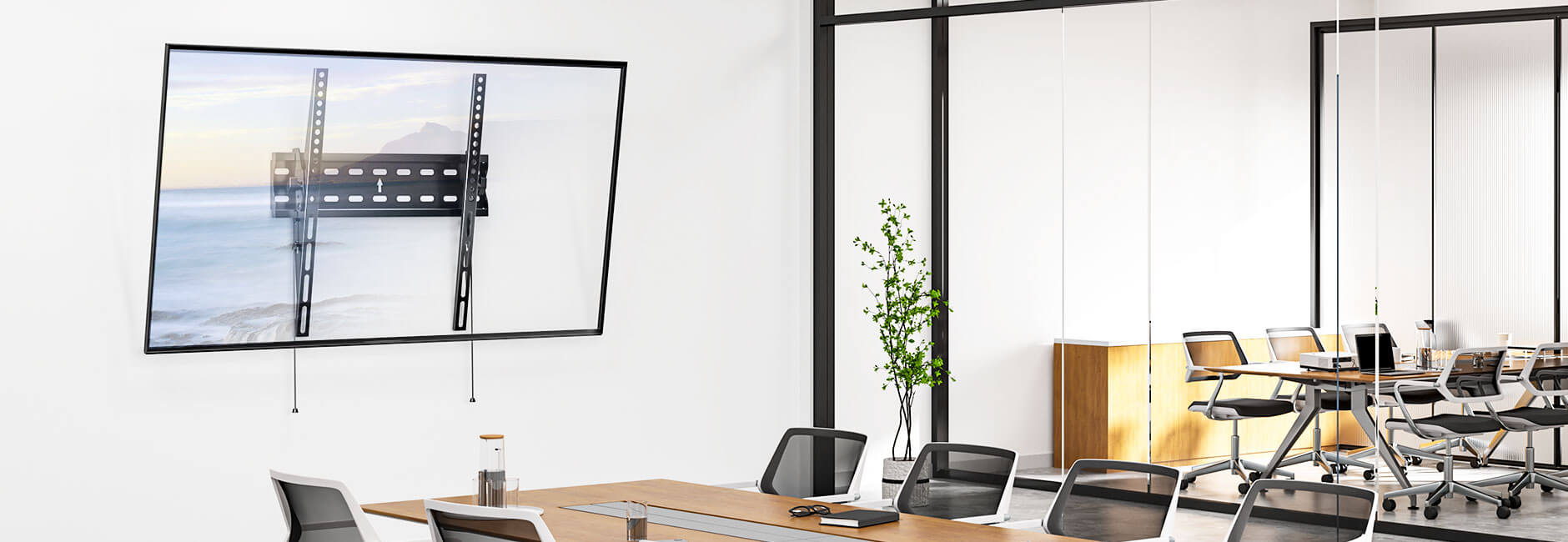|
Table of Contents Key Takeaways 1.Understanding Metal Studs and Their Challenges 2.Essential Tools and Materials for the Job 3.Preparing Your Wall for Installation 4.Drilling and Anchoring Techniques 5.Mounting the TV Bracket 6.Attaching and Adjusting the TV 7.Cable Management Solutions 8.Conclusion 9.Frequently Asked Questions |
Mounting a TV on a wall with metal framing can be a bit tricky compared to wooden studs, but it’s totally doable with the right tools and steps. Metal studs are becoming more common in modern homes due to their durability and cost-effectiveness. This guide will walk you through the process, ensuring your TV is securely mounted and your wall remains intact.
Key Takeaways
- Metal studs require special screws like self-tapping metal screws or toggle bolts for secure mounting.
- Always use a stud finder to locate metal studs accurately before drilling.
- Ensure the TV wall mount kit is compatible with metal studs for stability and safety.
- Distribute the TV's weight evenly across the metal studs using the correct mounting bracket.
- Check for electrical wiring and plumbing behind the wall to avoid potential hazards.
Understanding Metal Studs and Their Challenges
Why Metal Studs Are Used
Metal studs are often used in construction because they are lightweight, resistant to fire, and not prone to warping like wood. They are also less susceptible to termites and other pests. These benefits make them a popular choice in commercial buildings and some residential projects.
Differences Between Metal and Wood Studs
- Material: Metal studs are made from steel, while wood studs are made from lumber.
- Weight: Metal studs are lighter than wood studs, making them easier to handle and install.
- Durability: Metal studs are resistant to fire and pests, whereas wood studs can be damaged by termites and rot.
- Flexibility: Wood studs can be cut and shaped easily, while metal studs require special tools for cutting.
Common Challenges with Metal Studs
Installing a TV wall mount on metal studs can present several challenges:
- Misalignment Issues: Metal studs can sometimes be misaligned, making it difficult to find the center for drilling.
- Cutting and Fitting: Metal studs require special tools for cutting, which can be cumbersome for DIY projects.
- Corrosion: Over time, metal studs can corrode, especially in humid environments.
- Thermal Expansion: Metal expands and contracts with temperature changes, which can affect the stability of your installation.
When working with metal studs, it's crucial to use the right tools and techniques to ensure a secure and stable installation. Always check for electrical wiring and plumbing before drilling.
By understanding these challenges, you can better prepare for a successful TV wall mount installation on metal framing.
Essential Tools and Materials for the Job
Tools You Will Need
To get started, you'll need a few essential tools. Make sure you have these on hand:
- Drill with a variety of bits
- Stud finder
- Level
- Tape measure
- Socket wrench set
- Screwdriver set
- Painter's tape
Choosing the Right TV Wall Mount Kit
Selecting the right TV wall mount kit is crucial. Look for kits that include:
- Concrete anchors and lag bolts
- Screws and washers
- Bracket and mounting arms
Safety Gear and Precautions
Safety should always come first. Equip yourself with:
- Safety goggles
- Work gloves
- Dust mask
Always double-check that you are not drilling into electrical cables or plumbing. This is a biggest concern when working with walls.
By having the right tools and materials, you'll be well-prepared to mount your TV securely and safely.
Preparing Your Wall for Installation
Locating Metal Studs
First, use a stud finder to locate the metal studs behind the drywall. Metal studs are usually spaced further apart than wooden ones, so you might need to adjust the TV's position. Mark the center of each stud with a pencil to ensure accurate placement.
Marking the Mounting Points
Align the TV wall mount bracket with the metal studs and mark the screw holes on the wall. Make sure the bracket is level before marking. This step is crucial for a stable installation.
Checking for Electrical Wiring and Plumbing
Before drilling, check for any electrical wiring or plumbing behind the wall. Use a wire detector to avoid hitting any cables or pipes. This precaution helps prevent damage and ensures safety during installation.
Always double-check the wall for hidden hazards to avoid any accidents during the installation process.
Drilling and Anchoring Techniques
Selecting the Right Drill Bit
Choosing the correct drill bit is crucial for a successful installation. Typically, a ¼” drill will work, but this can vary depending on the unique specs of your TV mount. Always double-check the manufacturer's instructions to ensure you're using the right size.
Drilling Pilot Holes
Before you start drilling, it's essential to mark the exact spots where you'll be making holes. This helps in avoiding mistakes and ensures that everything lines up correctly. Remember, measure twice and cut once. Drilling pilot holes will make it easier to insert screws and reduce the risk of damaging the metal studs.
Using Self-Drilling Screws and Toggle Bolts
When it comes to securing your TV mount, you have a couple of options: self-drilling screws and toggle bolts. Self-drilling screws are convenient because they don't require a pilot hole, but they may not hold as well in metal studs. Toggle bolts, on the other hand, are very strong and can hold a lot of weight. They do require a larger hole, but they provide a more secure anchor.
The biggest concern is ensuring that you're not drilling into electrical cables or plumbing. Always check behind the wall before you start drilling.
Here's a quick comparison of the two options:
| Feature | Self-Drilling Screws | Toggle Bolts |
|---|---|---|
| Ease of Use | Easy | Moderate |
| Holding Strength | Moderate | High |
| Hole Size | Small | Large |
| Installation Time | Quick | Longer |
By following these steps and choosing the right tools, you'll be well on your way to securely mounting your TV on metal studs.
Mounting the TV Bracket
Aligning the Bracket with Studs
First, align the TV wall mount bracket with the metal studs. Use a level to ensure the bracket is straight. This step is crucial to make sure your TV hangs properly. Mark the screw holes on the wall with a pencil.
Securing the Bracket to Metal Studs
Next, drill pilot holes at the marked points. Use a drill bit that matches the size of the anchors you'll be using. Insert the anchors and attach the bracket to the studs using screws designed for metal framing. Make sure the screws are tight and the bracket is secure.
Ensuring the Bracket is Level and Stable
After securing the bracket, double-check its stability. Apply pressure to ensure it is firmly attached to the metal studs. If it feels loose, you may need to adjust the screws or use longer ones. Finally, use a level to confirm the bracket is still straight and make any necessary adjustments.
Attaching and Adjusting the TV
Connecting the TV to the Bracket
First, attach the TV mounting plate to the back of the TV. With a partner, line up the TV mount with the bracket on the wall according to the manufacturer's instructions. This step is crucial to ensure the TV is securely attached.
Adjusting the TV Position
Once the TV is mounted, you can adjust its position. Most mounts allow you to tilt, swivel, or pan the TV to get the perfect viewing angle. Make sure to make these adjustments slowly to avoid any damage.
Testing the Stability of the Installation
After adjusting the TV, it's important to test the stability of the installation. Gently push and pull the TV to ensure it is firmly attached to the wall. If there is any movement, double-check the screws and bolts to make sure they are tight. This step ensures that your TV is safely mounted and won't fall off the wall.
Cable Management Solutions
Concealing Cables with Raceways
Using raceways is a simple way to hide your TV cables. These plastic channels stick to your wall and keep your cables out of sight. Raceways are easy to install and can be painted to match your wall color. This makes them a popular choice for many people.
In-Wall Cable Routing Options
For a cleaner look, you can route your cables inside the wall. This method requires a bit more work but gives a very neat finish. Products like the PowerBridge ONE-CK make this job easier. They allow you to conceal cables and power for your wall-mounted TV, giving a professional look.
Tips for a Clean and Organized Look
- Label your cables: This helps you know which cable is which, making it easier to manage them.
- Use cable ties: These keep your cables bundled together and prevent them from tangling.
- Plan your setup: Think about where your devices will go and how the cables will run before you start.
A well-organized cable setup not only looks good but also makes it easier to troubleshoot any issues later on.
Conclusion
Mounting a TV on a wall with metal framing might seem tricky at first, but with the right tools and steps, it can be done smoothly. Remember to always locate the metal studs accurately and use the appropriate screws and anchors designed for metal. Safety should be your top priority, so don't hesitate to ask for help if needed. By following this guide, you can enjoy your TV securely mounted on your wall, giving your room a clean and modern look.
Frequently Asked Questions
Can I mount a TV on metal studs?
Yes, you can mount a TV on metal studs. However, it requires specific tools and techniques to ensure a secure and stable installation.
What tools do I need to mount a TV on metal studs?
You will need a stud finder, electric drill, metal drill bits, a level, self-drilling screws or toggle bolts, safety goggles, and a TV wall mount kit compatible with metal studs.
How do I find metal studs in my wall?
You can use a stud finder to locate metal studs behind the drywall. Metal studs are typically spaced 16 or 24 inches apart.
What type of screws should I use for metal studs?
Use self-drilling screws or toggle bolts designed for metal studs. These types of screws provide better support and stability compared to regular wood screws.
Is it safe to mount a TV on metal studs?
Yes, it is safe to mount a TV on metal studs if you use the proper tools and follow the correct procedures. Always ensure the mount is securely attached to the studs.
How can I hide the cables after mounting the TV?
You can use cable raceways or in-wall cable routing kits to conceal the cables and create a clean, organized look.
Meta Description
Learn how to install a TV wall mount on metal framing with our step-by-step guide. Essential tools, tips, and techniques.




